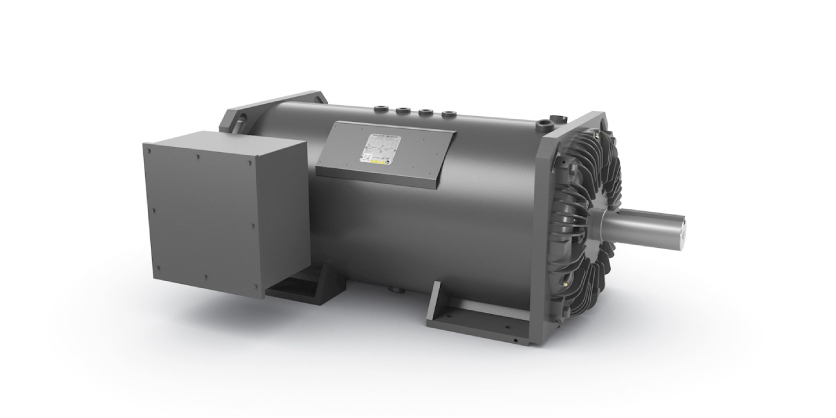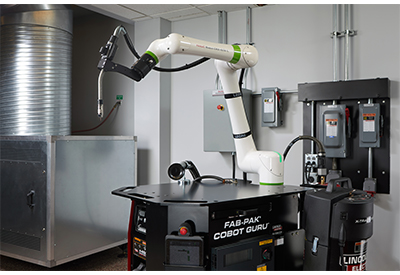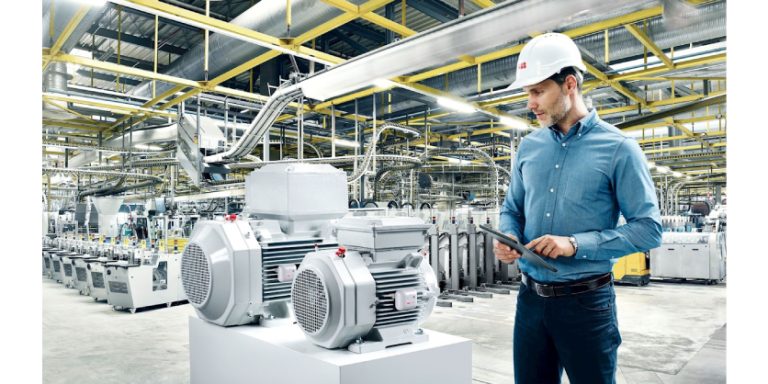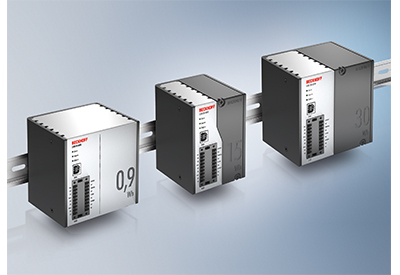ABB’s Baldor-Reliance® Hydrocool XT Water-Cooled Motor Delivers High Efficiency in A Power-Dense Design
February 9, 2023

- Highly efficient – IE5 efficiency and bearing protection
- High power density – 50% higher rating than similarly sized motors
- Low maintenance – Water-jacket cooling eliminates fans and filters
ABB’s Baldor-Reliance® HydroCool XT motor product line represents a new generation of water-cooled motors developed in response to market demands for improved technical features. HydroCool XT is quiet and versatile, and offers reduced maintenance and high performance in some of the toughest environments. Water-jacket cooling offers higher thermal conductivity than air cooling, helping to extend the motor life while eliminating the need for fans or air filters.
Available with induction or permanent magnet rotor technology, the motor can achieve the highest level (IE5) efficiency rating for energy savings, and the motor’s power-dense solution delivers more power in a smaller footprint than similarly sized totally enclosed, fan-cooled motors. HydroCool XT provides versatility for extreme marine duty, pulp and paper, water and wastewater pumping, mining and aggregate among others.
“The power- and torque-dense design of the HydroCool XT reduces its size, and since the cooling is built into the frame, there is no need for extra space around the motor for air flow,” said Matt Felt, Global Product Manager, Baldor-Reliance Navy & Marine Motors. “The motor is quieter than comparable air-cooled motors, and it’s able to achieve high efficiency ratings. These features result in a smaller physical footprint and lower overall operating costs when compared to similarly powered motors.”
Matt Felt, Global Product Manager, Baldor-Reliance Navy & Marine Motors
HydroCool XT offers an ideal combination of flexible design, low maintenance and reliable performance. The motor is available in four frame sizes from 60-1,250 horsepower (45-932 kW). Cooling efficiency is maintained even at lower speeds, allowing HydroCool XT to operate direct on line or as a variable speed motor without derating or power loss, ideal for constant torque applications. Shaft grounding is standard, and like most ABB products, HydroCool XT is equipped with provisions for ABB Ability™ Smart Sensor condition monitoring to provide instant information on the health and performance of the motor, providing connectivity and data analytics to make operations efficient, predictable and safe.
More Information
ABB Baldor-Reliance HydroCool XT
Related Product
Achieve the Next Level of Energy Efficiency With ABB’s New Baldor-Reliance EC Titanium Integrated Motor Drive
Motor standards have been in place for decades, yet there is a growing demand to achieve greater efficiencies as regulations continue to tighten on the total system for fans, pumps and compressors. Equipment manufacturers are turning to new motor technologies to achieve the highest system efficiency possible from wire to air while using sustainable materials.
ABB’s Baldor-Reliance EC Titanium product line utilizes Ferrite Assisted Synchronous Reluctance (FASR) technology with non-rare earth magnet materials to meet and exceed IE5 efficiency. Suitable for constant and variable torque applications, the EC Titanium offers excellent performance across a wide speed load range and above base speed conditions.






